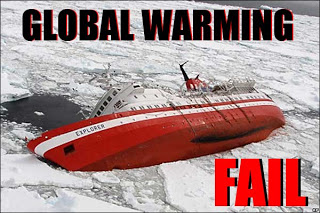 By Thomas Fuller, SF Environmental Policy Examiner
By Thomas Fuller, SF Environmental Policy Examiner
The objects of fear keep changing for global warming. It seems like only yesterday that we were all so worried about the North Pole being ice free. Now that the ice is back to normal, those concerned with global warming want us to turn our attention to the South Pole, and their fears that Antarctica is warming. A recent study was conducted by lead scientist Eric Steig and others that seemed to show that Antarctica was warming. This is strange, because prior data said it was cooling, and in fact the cooling was said to be predicted by earlier climate models. There is a peninsula in the Antarctic that juts out towards South America. It runs into ocean and air currents that are warmer than the rest of the Antarctic environment. It causes ice to break off of shelves and float away, creating wonderful photo opportunities. But the rest (95%) of Antarctic sits there frozen. It’s actually accumulating ice, due to increased precipitation. It is reported that the 95% of Antarctica that is not part of the peninsula is actually gaining 10,000 tons of ice per year. So this study was controversial. The people who conducted the study and analysis were handicapped by the small number of temperature measurement stations in Antarctica. Most of those stations are on the peninsula. It is as if the scientists tried to calculate values for the whole continent by inferring what temperatures were in Kansas based on the changes in temperature in San Diego. Predictably, this caused climate skeptics to go through their data carefully. A description of what they have found is here and here. You will have to understand statistics pretty well to get through the critique. The essential point of the criticism is that the scientists spread the data too thinly across the continent to produce any confidence in their results, and chose the only interpretation (out of many that were available) that showed warming in the Antarctic overall. At the end of the day, it now appears that temperatures are increasing on the peninsula that sticks out into a warmer part of the ocean, while it seems to be either getting colder or staying the same in the rest of the Antarctic continent. I do not volunteer to go and check personally, so I imagine there is room for further discussion.Source
global warming: the greatest fraud in history